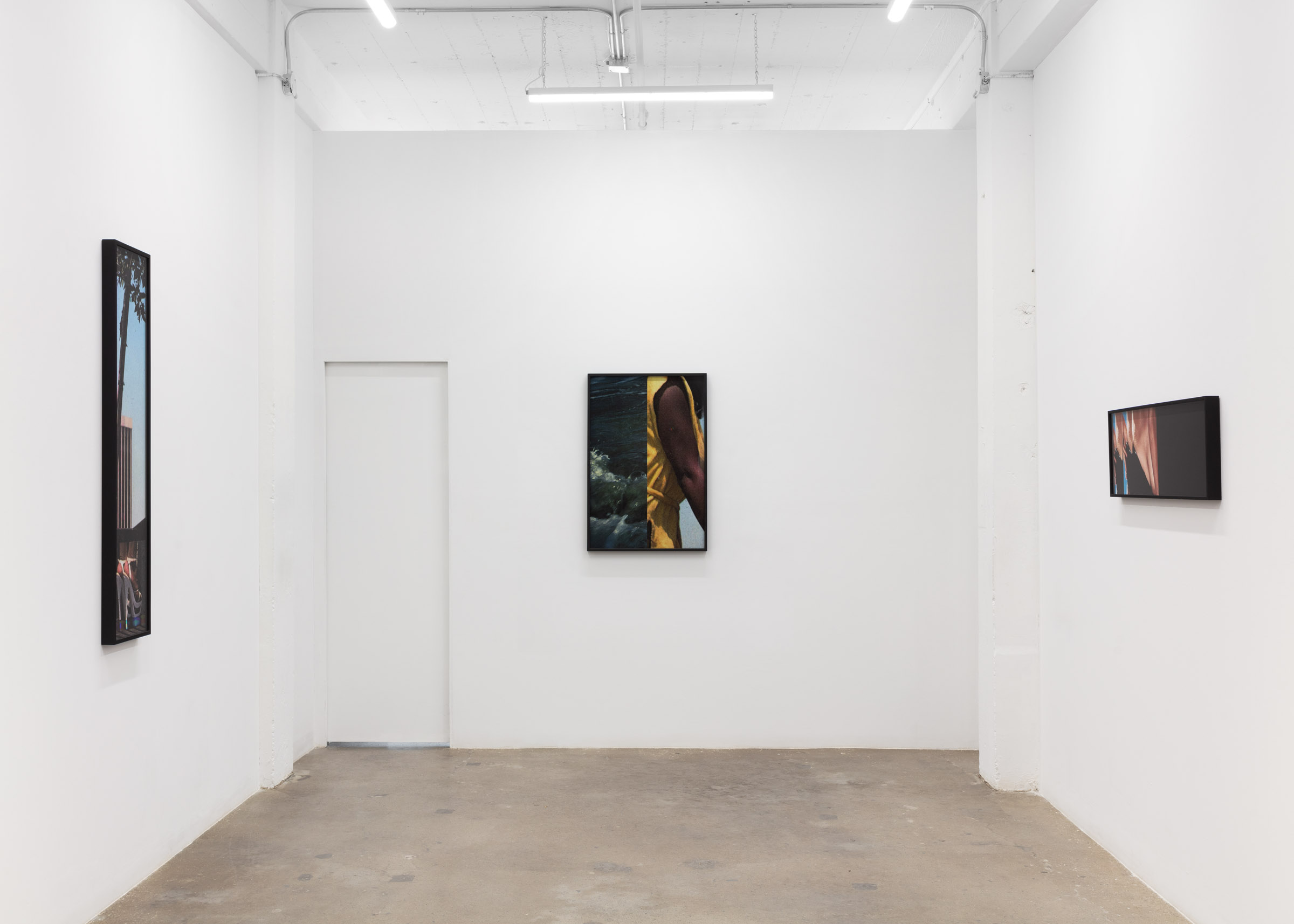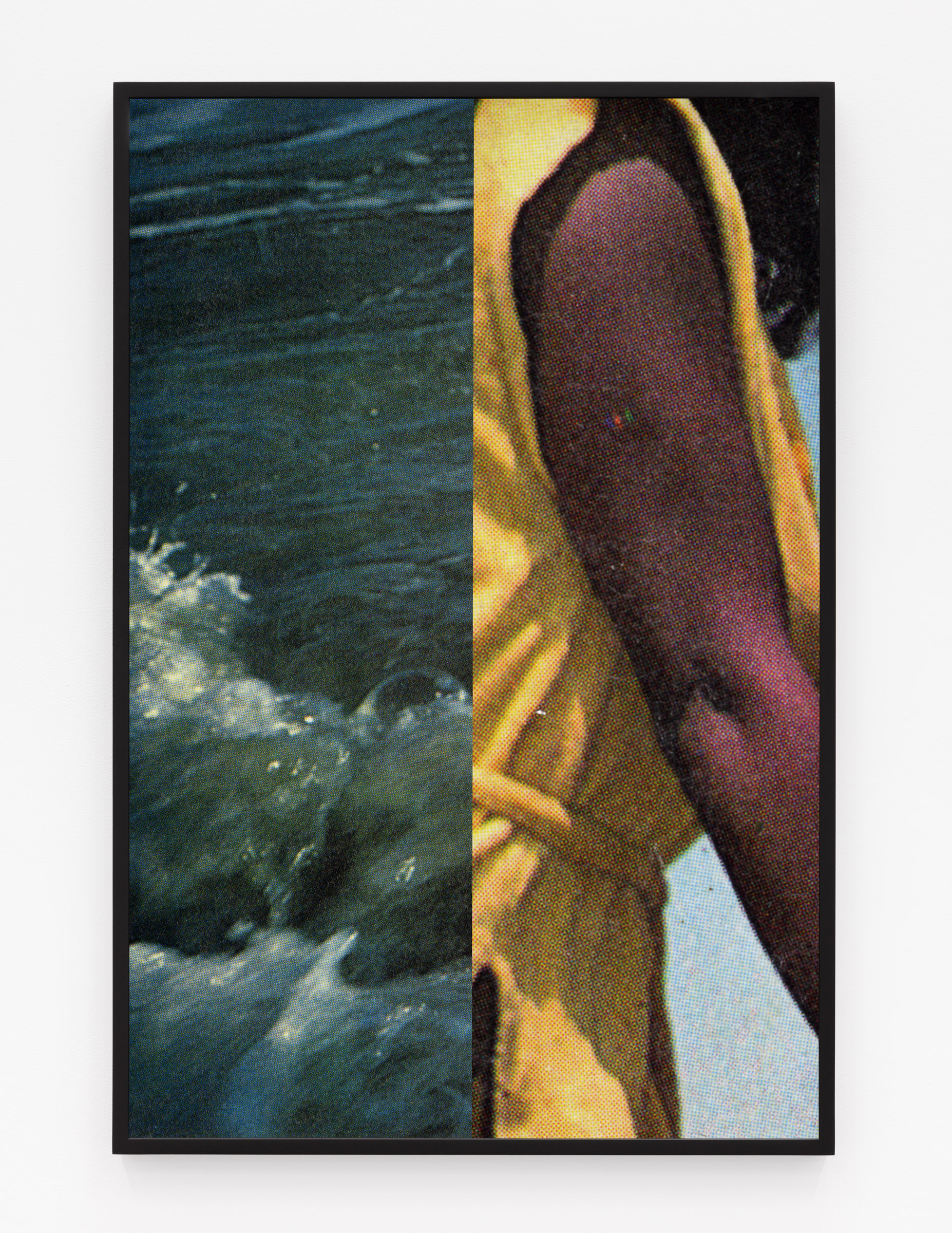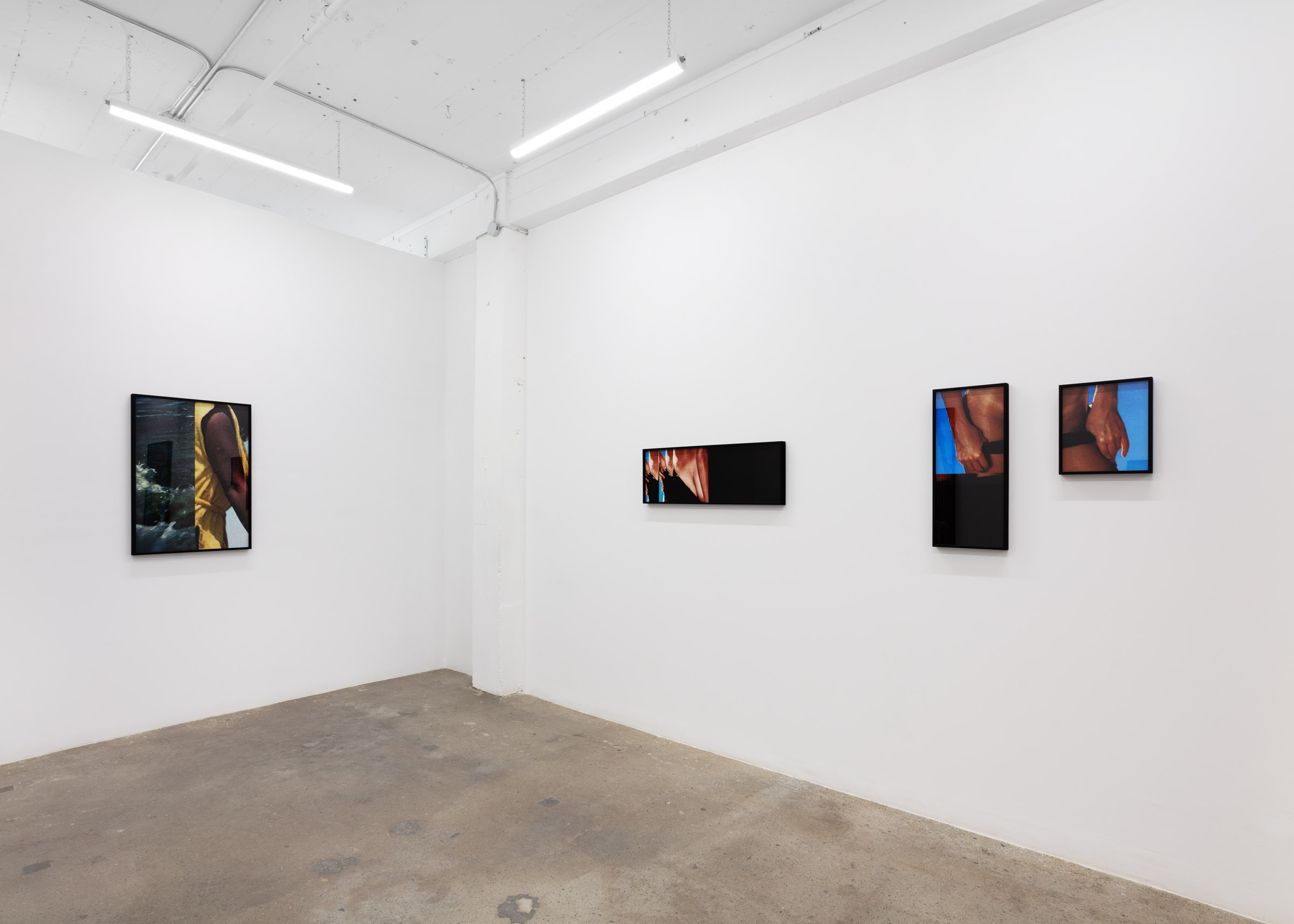






















Ordinary Pleasures
Karice Mitchell’s matter of becoming is an exhibition of diptych-based images drawn from an archive of Players Magazine from the 1970s, 80s, and 90s. The diptych form, in this context, can be read as a metaphor for the doubling of identity necessary for many Black and racially marginalized people to safely navigate public spaces. What is presented on the outside is often distinct from our internal world.
Formal readings of Mitchell’s diptychs and triptychs suggest an attentiveness to pleasure. Multiple images combined within a single frame featuring fragmentary shots of bodies whose bared Black skin is often posed to suggest an explicit sexuality — red fingernails adorn hands that enclose around a just out-of-sight crotch, buttressed on either side by images rushing water.
Mitchell’s images explore becoming and unbecoming and how the material of the body, especially the racialized body is created in relation to social, political, and cultural frameworks of oppression. Mitchell explores the balance between explicitness and illegibility. Again, doubling appears in the dual use of the explicit in Mitchell’s work — sexually explicit images drawn from magazines depicting moments of provocation and ecstasy are explicit in their relationship to (il)legibility.
Through her use of fragmented images, Mitchell employs the trope of The Glitch as outlined by theorist Legacy Russell in her powerful manifesto Glitch Feminism (2020). For Russell, “[the] Glitch aims to abstract again that which has been forced into an uncomfortable and ill defined material of the body.” For Russell, The Glitch as error brings new movement into static space. Mitchell uses techniques drawn from Russell’s manifesto to obscure the bodies depicted in her work as a way of protecting, and therefore not further exploiting the Black [female] body. Mitchell uses visuals that suggest literal glitches within digital mediums such as a pixelated patterned glitch that appears in one with the other. This pattern is reminiscent of the marks left by an elastic waistband pressed too long against bare flesh. An intimacy is felt in observing such a detail, the kind of experience that could occur while undressing a partner.
Saidiya Hartman has written that “Beauty is not a luxury, rather it is a way of creating possibility in the space of enclosure, a radical act of subsistence, an embrace of our terribleness, a transfiguration of the given. It is a will to adorn, a proclivity for the baroque, and the love of too much.” [1] Mitchell adopts this mantra of expansiveness to suggest that our current thinking about beauty via an attentiveness to appearance blocks crucial points in articulation and reclamation for the Black feminized body. In matter of becoming, to be unbecoming is to create space through rupture, disrupting how the bodies before us are read.
Here, beautiful bodies are remixed and transformed in order to be liberated. Mitchell has situated herself within an artistic lineage of artists such as Lorna Simpson, who explores sexuality and the body with specific attention to the Black [female] body within the bounds of photography. Simpson’s well-known photograph, You’re Fine (1988), is a four-part image that challenges the assumed gaze by resisting the observation of a Black female body exclusively through its physicality and sexual potential. Based on art historical traditions of the reclining nude, Simpon’s model is turned away from the camera, refusing the gaze of the viewer. Like Simpson, Mitchell engages with depictions of the Black body to propose an expansion of agency and interpretation through the metaphor of The Glitch.
Mitchell’s work explores how the delicate and profound pleasures gained through proximity to the body resist being read explicitly through the lens of the political. Jennifer C. Nash has written on Black feminist relationships to the mundane which Mitchell explores through a reclamation of sexuality. For Nash, the Black ordinary is one form of freedom. Within the world of the diptych, two things can be true—the material of the racialized body is a site of resistance, while the experience of the body is a conduit for the mundane pleasure of sex.
matter of becoming asks the question, what does reclaiming sexuality look like in the history of exploitation of Black female bodies? As Mitchell and scholars like Russell suggest, the racialized body is The Glitch which exceeds and disrupts frameworks of oppression. In her application of abstraction and fragmentation of images, Mitchell intervenes in the heteronormative framework of the Gaze as proposed by the original magazine spreads; however, the fragmentary nature of the images does not diminish the power of sex that the images carry. This is significant, as even in our resistance, there needs to be space for fucking.
- Lillian O’Brien Davis, 2024
[1] Hartman, Saidiya V.. 2019. Wayward Lives, Beautiful Experiments: Intimate Histories of Social Upheaval. New York, NY, W.W. Norton & Company.
Karice Mitchell (b. 1996, Toronto, CA) is a photo-based installation artist whose practice uses found imagery and digital manipulation to engage with issues relating to the representation of the Black female body in pornography and popular culture. Her work seeks to re-contextualize pre-existing images to reimagine the possibilities for Black womanhood and sexuality detached from the white gaze and patriarchy. She received her BFA at York University in 2019 and her MFA at the University of Waterloo in June 2021. She currently resides on the unceded and traditional territories of the Musqueam, Squamish, and Tsleil-Waututh First Nations. She is a full-time lecturer at the University of British Columbia Vancouver campus.
